BE THE FIRST TO GET PRODUCT UPDATES
Get notified about new features & special offers......
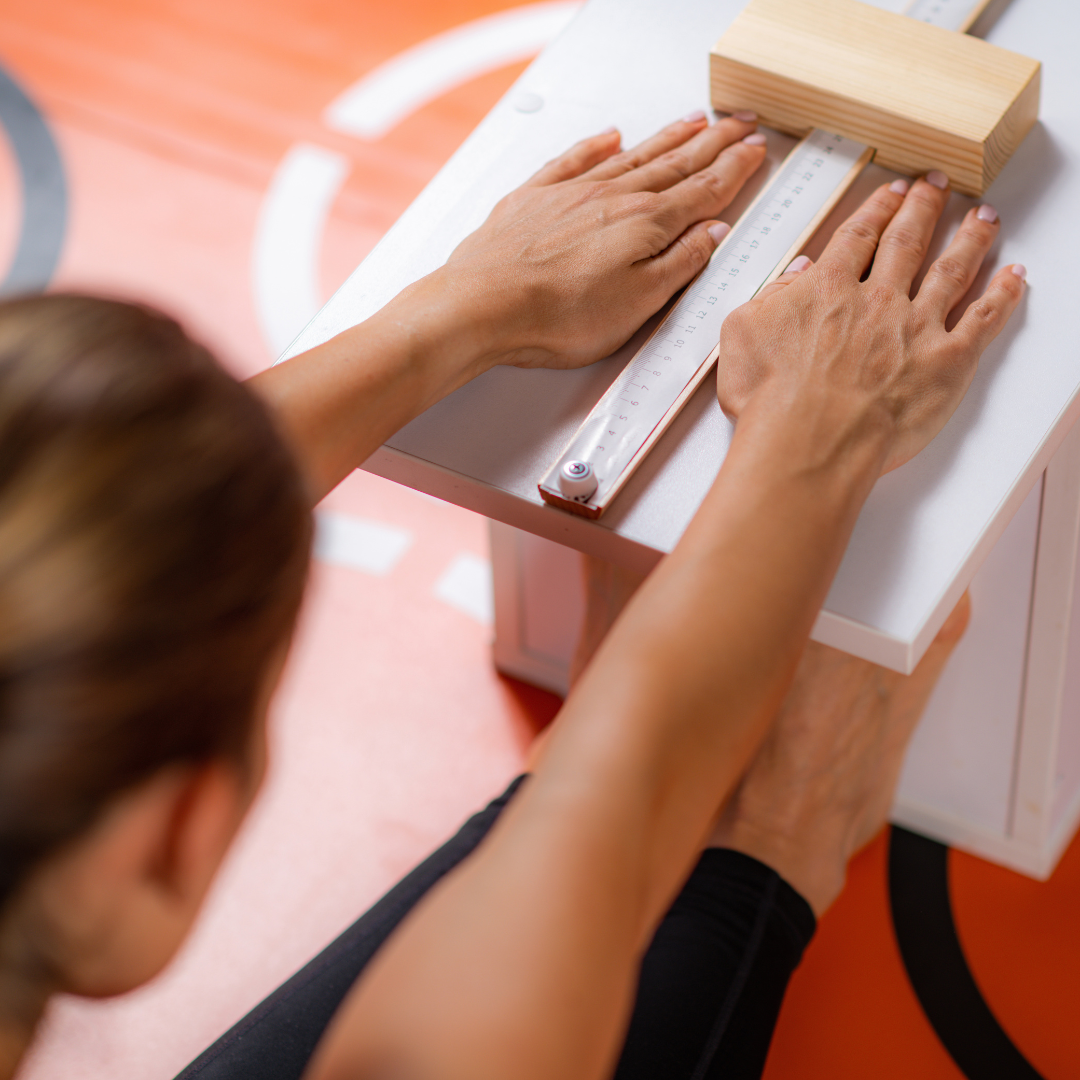
The sit-and-reach test is the most widely used flexibility assessment in sports performance and rehabilitation [1]. Athletes sit with legs extended and reach forward along a measuring box: simple, reliable, and providing valuable baseline data. What is a sit and reach test really measuring? Research reveals it's more complex than the name suggests.

Traditional thinking says "hamstrings," but research tells a different story. A comprehensive meta-analysis examining the validity of sit-and-reach tests found that performance is influenced by both hamstring extensibility and lumbar spine mobility [2]. This means the sit-and-reach test assesses hamstring flexibility AND lumbar mobility, not hamstrings in isolation.
Why does this matter? Two athletes can achieve identical sit-and-reach scores through completely different movement strategies, making it unclear what needs to be addressed in training.
Standard Execution:
Critical: Keep knees fully extended and avoid bouncing movements [1].
Adapted from Canadian Society for Exercise Physiology normative data [3]. Values shown in centimeters (cm) represent minimum thresholds for each rating category.

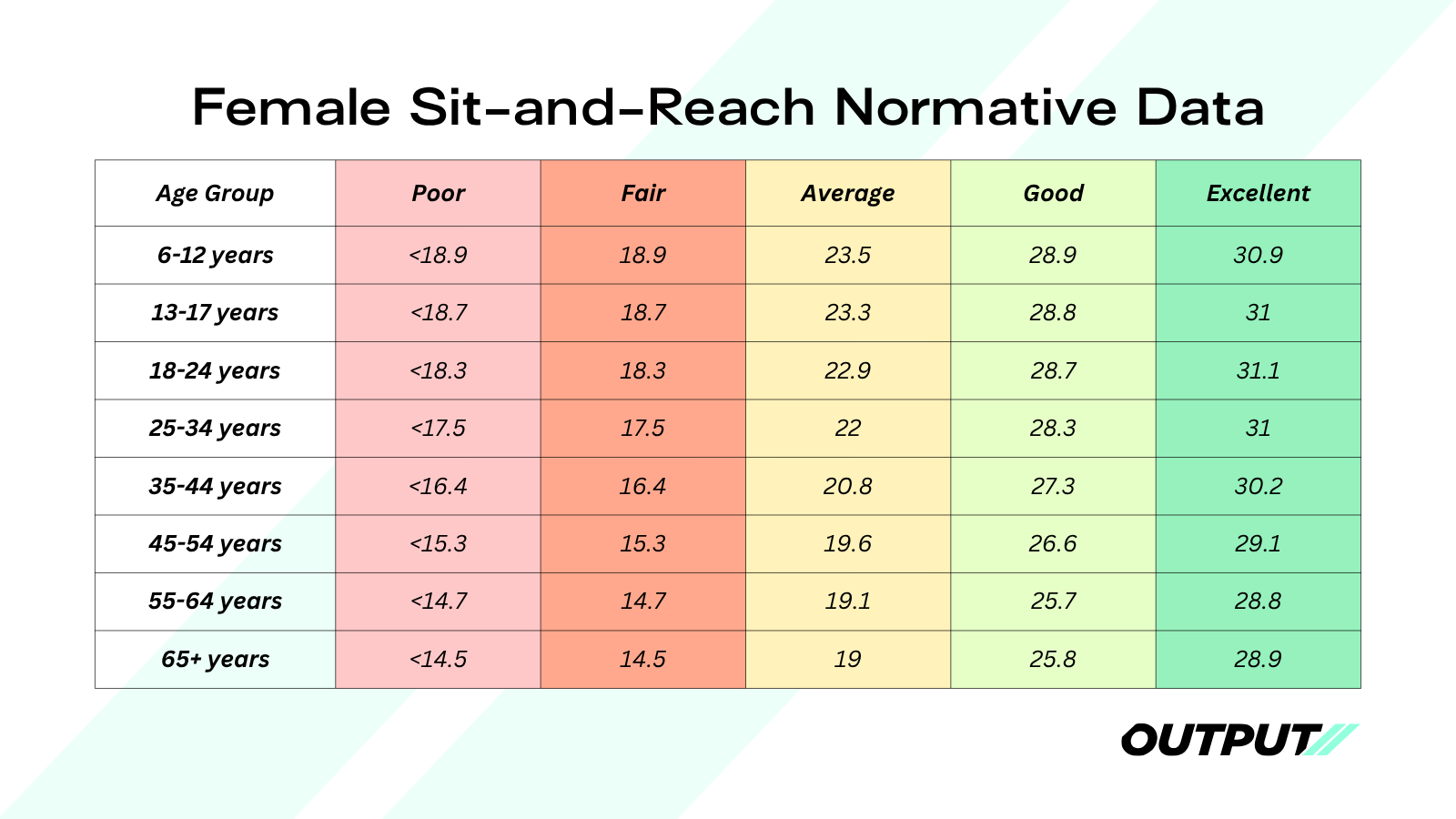
While the sit-and-reach test is easy to administer and provides useful screening data, it has notable constraints as can be seen in the table below:
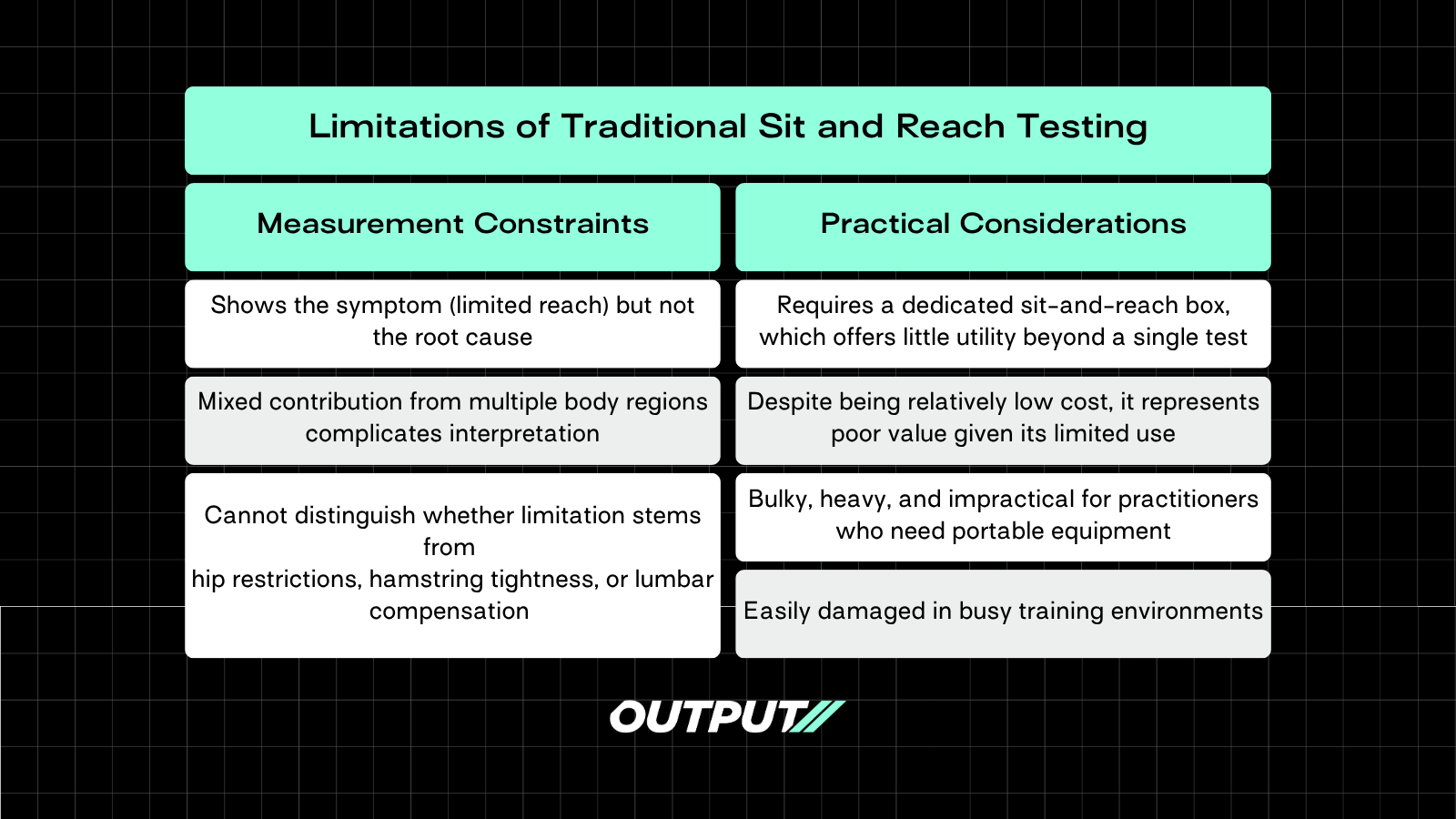
The core issue: An athlete scores 8cm, but you don't know whether to mobilize hips, stretch hamstrings, or stabilize the lumbar spine.
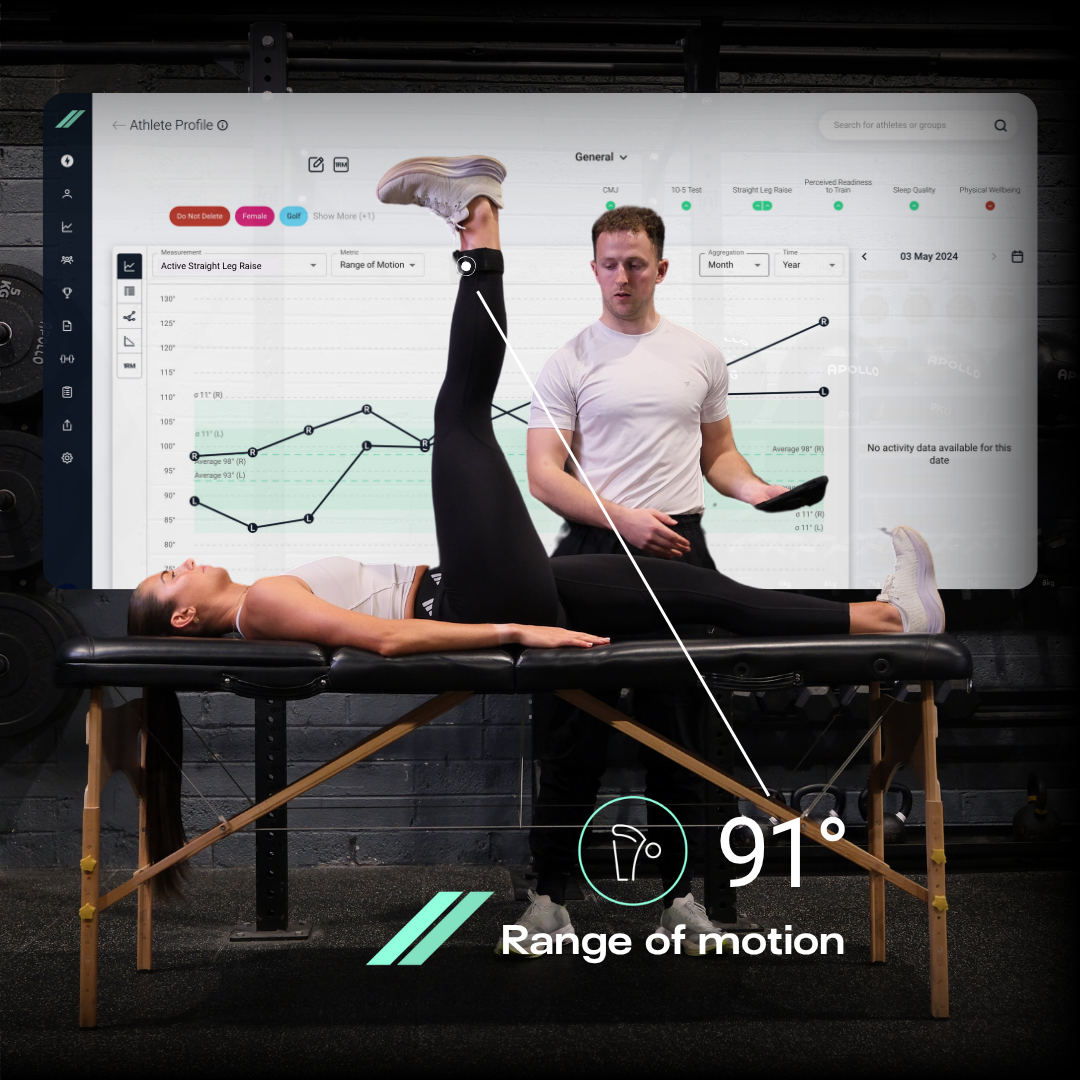
The straight leg raise (SLR) test offers superior hamstring assessment because it isolates hamstring extensibility without lumbar spine contribution [4]. Combined with Output Sports' comprehensive approach, practitioners gain clarity that traditional sit-and-reach testing cannot provide.
Equipment & Practicality:
✔ True diagnostic capabilities: see where the issues lie
✔ Portable technology ideal for traveling practitioners
✔ Multi-purpose equipment serving various assessment and training needs
True Isolation Through Joint-by-Joint Assessment:
Output Sports enables a systematic joint-by-joint approach, recognizing that the body alternates between mobility and stability requirements:
Mobility Joints: Ankles, hips, thoracic spine
Stability Joints: Knees, lumbar spine
By combining SLR for isolated hamstring assessment with hip mobility screens and lumbar stability tests, Output Sports builds a complete movement profile. Where sit-and-reach testing provides a single mixed-variable score, Output Sports separates the components:
Where Output far exceeds the traditional sit-and-reach is its true diagnostic capabilities. Two athletes may achieve the same score of 8cm on the sit-and-reach test, leading practitioners to assume they need the same intervention to develop and sustain their range of movement. When we dig deeper, we see that both athletes need drastically different interventions.
Athlete 1:
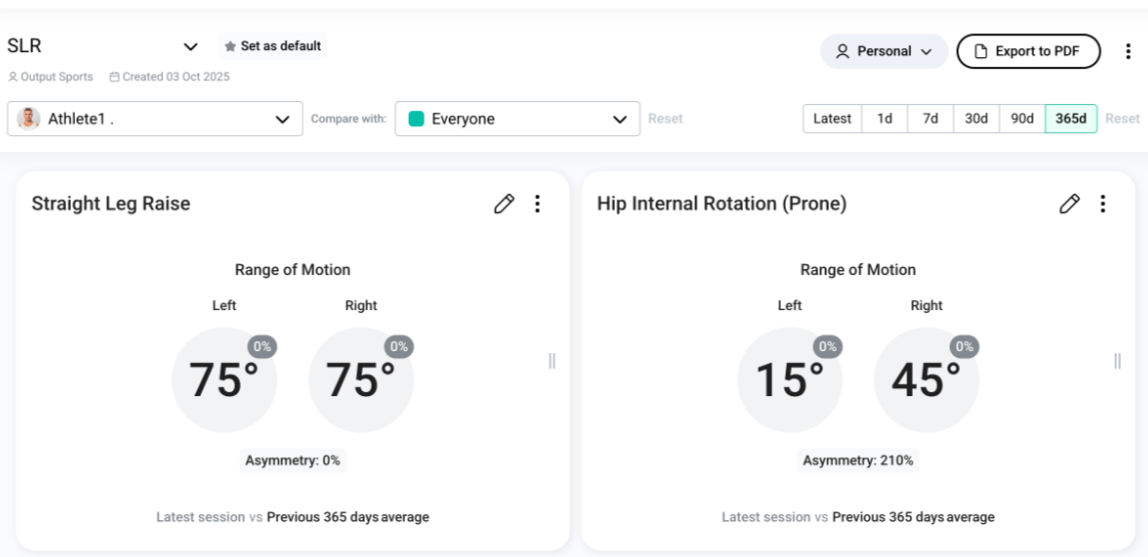
Output Sports SLR shows normal hamstring length (75° hip flexion). Hip internal rotation assessment reveals significant restriction (15° vs. 45° norm). The sit-and-reach limitation stems from hip joint mobility deficits creating compensatory lumbar flexion.
Solution: Hip internal rotation mobilization and strengthening. Hamstring stretching is unnecessary.
Athlete 2:

Output Sports SLR shows restricted hamstring length (55° hip flexion). Hip mobility is excellent (45° internal rotation). The limitation is genuine hamstring inflexibility.
Solution: Targeted hamstring stretching and eccentric strengthening protocols.
Same sit-and-reach score. Completely different root causes. Precise interventions.
Output Sports transforms single-variable testing into comprehensive system analysis:
By understanding root causes and implementing precise programming, practitioners can unlock greater range of movement in restricted athletes. This improved mobility enhances movement efficiency, allowing athletes to achieve better kinematic positions that optimize force delivery and power output.
For Injury Prevention:
Identifying true restrictions versus compensatory patterns allows practitioners to address the actual red flags for hamstring strains:
Research confirms that hamstring strains are the most common injury in sprinting sports [6], making accurate root cause identification critical for effective prevention strategies [5].
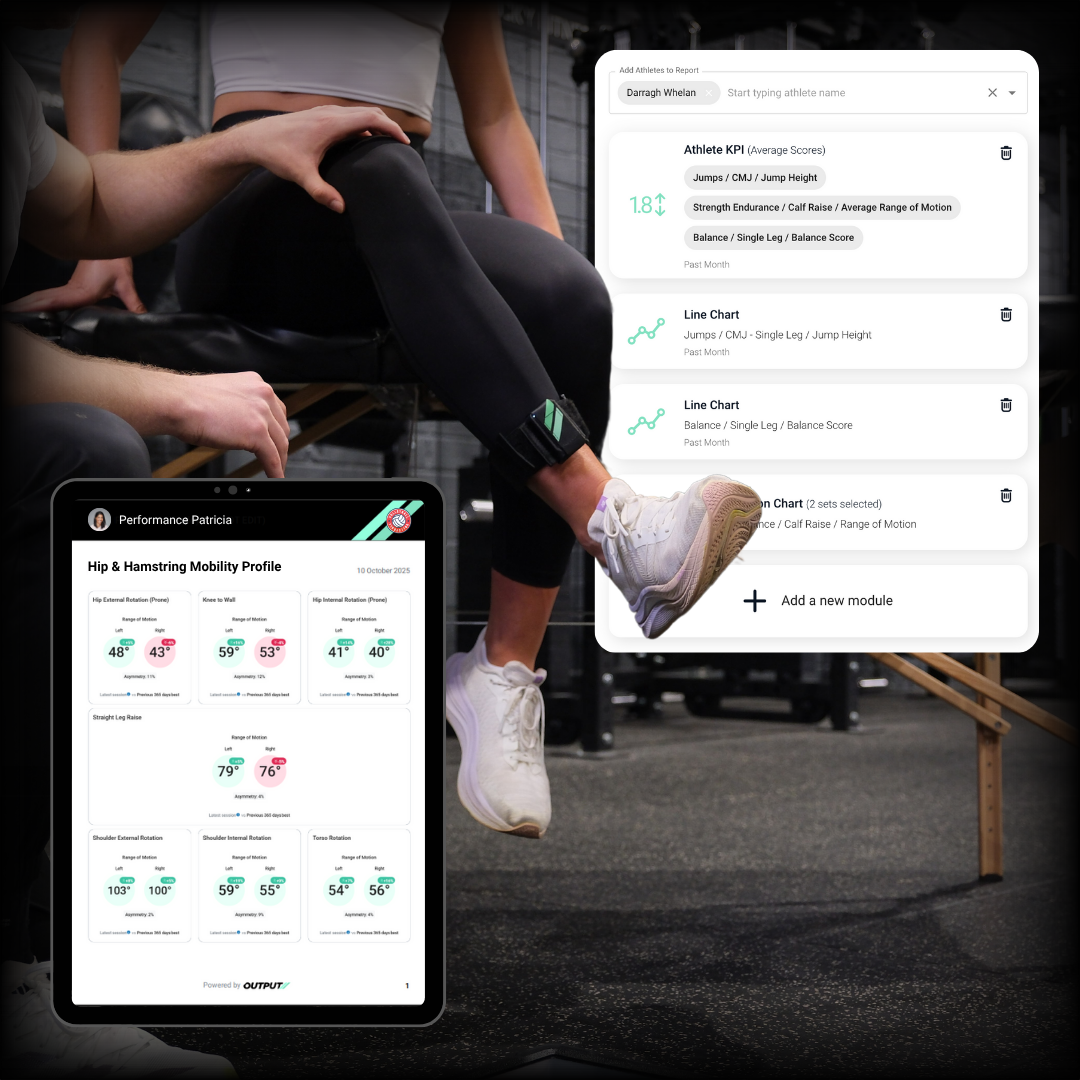
The sit-and-reach test provides valuable flexibility screening, but its inability to isolate contributing factors limits practical application [2]. Research confirms it measures both hamstrings and lumbar spine, making root cause identification impossible from this test alone.
What Output Sports Delivers:
The Reality: Two athletes both score 8cm. One needs hip mobilization; the other needs hamstring work. Traditional testing can't tell them apart. Output Sports can.
Stop treating mixed symptoms. Start addressing specific root causes.
[1] Wells, K. F., & Dillon, E. K. (1952). "The sit and reach: a test of back and leg flexibility." Research Quarterly. American Association for Health, Physical Education and Recreation, 23(1), 115-118.
[2] Ayala, F., Sainz de Baranda, P., De Ste Croix, M., & Santonja, F. (2012). "Criterion-related validity of sit-and-reach tests for estimating hamstring and lumbar extensibility: a meta-analysis." Journal of Sports Science and Medicine, 11(1), 14-34.
[3] Canadian Society for Exercise Physiology. (2003). "Canadian Physical Activity, Fitness and Lifestyle Approach: CSEP-Health and Fitness Program's Health-Related Appraisal and Counselling Strategy," 3rd edition.
[4] Ayala, F., Sainz de Baranda, P., De Ste Croix, M., & Santonja, F. (2012). "Criterion-related validity of sit-and-reach tests for estimating hamstring and lumbar extensibility: a meta-analysis." Journal of Sports Science and Medicine, 11(1), 14-34.
[5] Maniar, N., Shield, A. J., Williams, M. D., Timmins, R. G., & Opar, D. A. (2016). "Hamstring strength and flexibility after hamstring strain injury: a systematic review and meta-analysis." British Journal of Sports Medicine, 50(15), 909-920.
[6] Opar, D. A., Williams, M. D., & Shield, A. J. (2012). "Hamstring strain injuries: factors that lead to injury and re-injury." Sports Medicine, 42(3), 209-226.